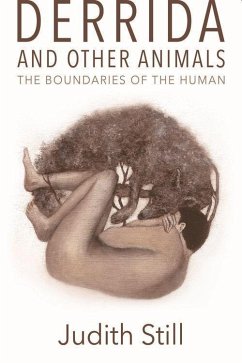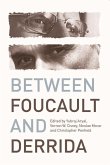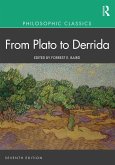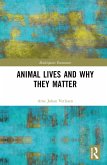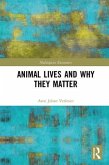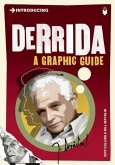Judith Still (Professor of French and University o Critical Theory
Derrida and Other Animals
The Boundaries of the Human
Judith Still (Professor of French and University o Critical Theory
Derrida and Other Animals
The Boundaries of the Human
- Broschiertes Buch
- Merkliste
- Auf die Merkliste
- Bewerten Bewerten
- Teilen
- Produkt teilen
- Produkterinnerung
- Produkterinnerung
Judith Still analyses Derridaâ s late writings on animals, especially his seminars The Beast and the Sovereign, to explore ethical questions of how humans treat animals and how we treat outsiders, from slaves to terrorists.
Andere Kunden interessierten sich auch für
![Between Foucault and Derrida Between Foucault and Derrida]() Between Foucault and Derrida33,99 €
Between Foucault and Derrida33,99 €![Philosophic Classics: From Plato to Derrida Philosophic Classics: From Plato to Derrida]() Philosophic Classics: From Plato to Derrida145,99 €
Philosophic Classics: From Plato to Derrida145,99 €![Animal Lives and Why They Matter Animal Lives and Why They Matter]() Arne Johan Vetlesen (Norway University of Oslo)Animal Lives and Why They Matter149,99 €
Arne Johan Vetlesen (Norway University of Oslo)Animal Lives and Why They Matter149,99 €![Animal Lives and Why They Matter Animal Lives and Why They Matter]() Arne Johan VetlesenAnimal Lives and Why They Matter45,99 €
Arne Johan VetlesenAnimal Lives and Why They Matter45,99 €![Derrida Reads Shakespeare Derrida Reads Shakespeare]() Chiara AlfanoDerrida Reads Shakespeare36,99 €
Chiara AlfanoDerrida Reads Shakespeare36,99 €![Derrida Reads Shakespeare Derrida Reads Shakespeare]() Chiara AlfanoDerrida Reads Shakespeare127,99 €
Chiara AlfanoDerrida Reads Shakespeare127,99 €![Introducing Derrida Introducing Derrida]() Jeff CollinsIntroducing Derrida15,99 €
Jeff CollinsIntroducing Derrida15,99 €-
-
-
Judith Still analyses Derridaâ s late writings on animals, especially his seminars The Beast and the Sovereign, to explore ethical questions of how humans treat animals and how we treat outsiders, from slaves to terrorists.
Produktdetails
- Produktdetails
- Verlag: Edinburgh University Press
- Seitenzahl: 416
- Erscheinungstermin: 4. Juni 2020
- Englisch
- Abmessung: 154mm x 233mm x 29mm
- Gewicht: 622g
- ISBN-13: 9781474474559
- ISBN-10: 1474474551
- Artikelnr.: 59362067
- Herstellerkennzeichnung
- Libri GmbH
- Europaallee 1
- 36244 Bad Hersfeld
- gpsr@libri.de
- Verlag: Edinburgh University Press
- Seitenzahl: 416
- Erscheinungstermin: 4. Juni 2020
- Englisch
- Abmessung: 154mm x 233mm x 29mm
- Gewicht: 622g
- ISBN-13: 9781474474559
- ISBN-10: 1474474551
- Artikelnr.: 59362067
- Herstellerkennzeichnung
- Libri GmbH
- Europaallee 1
- 36244 Bad Hersfeld
- gpsr@libri.de
Judith Still is Professor of French and Critical Theory and Head of the School of Cultures, Languages and Area Studies at the University of Nottingham. She is the author of Justice and Differences in the Works of Rousseau (CUP, 1993), Feminine Economies: Thinking against the Market in the Enlightenment and the Late Twentieth Century (MUP, 1997), Derrida and Hospitality (EUP, 2010, Gapper Prize winner 2011) and Enlightenment Hospitality (Voltaire Foundation, 2011).
Chapter One 'Introduction'
1. The Frontier or Abyss - and Animals as Good to Think
2. The Derrida Texts in Question and the Problem of Defining Terms
3. Socio-political Contexts
4. The Philosophical Tradition: Aristotle to Levinas
5. The Modern Critical and Literary Context
6. Savages
Slaves and Women; Chapter Two 'Man is a Wolf to Man'
1. Introduction: The Beast and the Sovereign and Lycological Intertexts
2. La Fontaine and the Fable of Might and Right
3. Rousseau and Hobbes: Wolves in the State of Nature
4. Wolves in the Encyclopédie
5. From Hunger to Taste
and the Eating of Flesh
6. Concluding Comments; Chapter Three 'The Love of the Wolf'
1. A Certain Tradition
2. Renée Vivien and 'The Lady with the She-Wolf'
3. Cixous and Other Loving
4. Little Red Riding Hood; Chapter Four 'The Savage'
1. Background: the Ethnographic and Philosophic Encounter with the New World from La Fontaine Onwards
2. What is the Difference between 'Man' and 'Animal' (Savage)?
3. Solitude
Social Characteristics and the Human Community: the Community of Cannibals?
4. Derrida and 'Eating Well'; Chapter Five 'The Slave'
1. Sovereignty: Masters Defining Slaves
2. The Animal-thing
3. The Pretend Family of Slavery
4. The Community and Terror: Letters from an American Farmer; Chapter Six 'Women and Other Animals: Working Metamorphoses'
1. Fables: Duffy's 'Mrs Aesop'
2. Work and Technology: Women as Animals
3. Metamorphoses
4. Porcine Metamorphosis: From Ulysses's Companions to Darrieussecq
5. Love and Money in Marie Ndiaye's Ladivine
6. Conclusion around Eating and Writing; Chapter Seven 'Wanting Conclusion'
1. Blindness
Textual and Historical
2. Self-positing Man and Enlightenment
3. The State and Terror
4. Returning to Animals
5. Women and Emotion
6. Stupid Conclusions and Gesturing to the Future.
1. The Frontier or Abyss - and Animals as Good to Think
2. The Derrida Texts in Question and the Problem of Defining Terms
3. Socio-political Contexts
4. The Philosophical Tradition: Aristotle to Levinas
5. The Modern Critical and Literary Context
6. Savages
Slaves and Women; Chapter Two 'Man is a Wolf to Man'
1. Introduction: The Beast and the Sovereign and Lycological Intertexts
2. La Fontaine and the Fable of Might and Right
3. Rousseau and Hobbes: Wolves in the State of Nature
4. Wolves in the Encyclopédie
5. From Hunger to Taste
and the Eating of Flesh
6. Concluding Comments; Chapter Three 'The Love of the Wolf'
1. A Certain Tradition
2. Renée Vivien and 'The Lady with the She-Wolf'
3. Cixous and Other Loving
4. Little Red Riding Hood; Chapter Four 'The Savage'
1. Background: the Ethnographic and Philosophic Encounter with the New World from La Fontaine Onwards
2. What is the Difference between 'Man' and 'Animal' (Savage)?
3. Solitude
Social Characteristics and the Human Community: the Community of Cannibals?
4. Derrida and 'Eating Well'; Chapter Five 'The Slave'
1. Sovereignty: Masters Defining Slaves
2. The Animal-thing
3. The Pretend Family of Slavery
4. The Community and Terror: Letters from an American Farmer; Chapter Six 'Women and Other Animals: Working Metamorphoses'
1. Fables: Duffy's 'Mrs Aesop'
2. Work and Technology: Women as Animals
3. Metamorphoses
4. Porcine Metamorphosis: From Ulysses's Companions to Darrieussecq
5. Love and Money in Marie Ndiaye's Ladivine
6. Conclusion around Eating and Writing; Chapter Seven 'Wanting Conclusion'
1. Blindness
Textual and Historical
2. Self-positing Man and Enlightenment
3. The State and Terror
4. Returning to Animals
5. Women and Emotion
6. Stupid Conclusions and Gesturing to the Future.
Chapter One 'Introduction'
1. The Frontier or Abyss - and Animals as Good to Think
2. The Derrida Texts in Question and the Problem of Defining Terms
3. Socio-political Contexts
4. The Philosophical Tradition: Aristotle to Levinas
5. The Modern Critical and Literary Context
6. Savages
Slaves and Women; Chapter Two 'Man is a Wolf to Man'
1. Introduction: The Beast and the Sovereign and Lycological Intertexts
2. La Fontaine and the Fable of Might and Right
3. Rousseau and Hobbes: Wolves in the State of Nature
4. Wolves in the Encyclopédie
5. From Hunger to Taste
and the Eating of Flesh
6. Concluding Comments; Chapter Three 'The Love of the Wolf'
1. A Certain Tradition
2. Renée Vivien and 'The Lady with the She-Wolf'
3. Cixous and Other Loving
4. Little Red Riding Hood; Chapter Four 'The Savage'
1. Background: the Ethnographic and Philosophic Encounter with the New World from La Fontaine Onwards
2. What is the Difference between 'Man' and 'Animal' (Savage)?
3. Solitude
Social Characteristics and the Human Community: the Community of Cannibals?
4. Derrida and 'Eating Well'; Chapter Five 'The Slave'
1. Sovereignty: Masters Defining Slaves
2. The Animal-thing
3. The Pretend Family of Slavery
4. The Community and Terror: Letters from an American Farmer; Chapter Six 'Women and Other Animals: Working Metamorphoses'
1. Fables: Duffy's 'Mrs Aesop'
2. Work and Technology: Women as Animals
3. Metamorphoses
4. Porcine Metamorphosis: From Ulysses's Companions to Darrieussecq
5. Love and Money in Marie Ndiaye's Ladivine
6. Conclusion around Eating and Writing; Chapter Seven 'Wanting Conclusion'
1. Blindness
Textual and Historical
2. Self-positing Man and Enlightenment
3. The State and Terror
4. Returning to Animals
5. Women and Emotion
6. Stupid Conclusions and Gesturing to the Future.
1. The Frontier or Abyss - and Animals as Good to Think
2. The Derrida Texts in Question and the Problem of Defining Terms
3. Socio-political Contexts
4. The Philosophical Tradition: Aristotle to Levinas
5. The Modern Critical and Literary Context
6. Savages
Slaves and Women; Chapter Two 'Man is a Wolf to Man'
1. Introduction: The Beast and the Sovereign and Lycological Intertexts
2. La Fontaine and the Fable of Might and Right
3. Rousseau and Hobbes: Wolves in the State of Nature
4. Wolves in the Encyclopédie
5. From Hunger to Taste
and the Eating of Flesh
6. Concluding Comments; Chapter Three 'The Love of the Wolf'
1. A Certain Tradition
2. Renée Vivien and 'The Lady with the She-Wolf'
3. Cixous and Other Loving
4. Little Red Riding Hood; Chapter Four 'The Savage'
1. Background: the Ethnographic and Philosophic Encounter with the New World from La Fontaine Onwards
2. What is the Difference between 'Man' and 'Animal' (Savage)?
3. Solitude
Social Characteristics and the Human Community: the Community of Cannibals?
4. Derrida and 'Eating Well'; Chapter Five 'The Slave'
1. Sovereignty: Masters Defining Slaves
2. The Animal-thing
3. The Pretend Family of Slavery
4. The Community and Terror: Letters from an American Farmer; Chapter Six 'Women and Other Animals: Working Metamorphoses'
1. Fables: Duffy's 'Mrs Aesop'
2. Work and Technology: Women as Animals
3. Metamorphoses
4. Porcine Metamorphosis: From Ulysses's Companions to Darrieussecq
5. Love and Money in Marie Ndiaye's Ladivine
6. Conclusion around Eating and Writing; Chapter Seven 'Wanting Conclusion'
1. Blindness
Textual and Historical
2. Self-positing Man and Enlightenment
3. The State and Terror
4. Returning to Animals
5. Women and Emotion
6. Stupid Conclusions and Gesturing to the Future.

